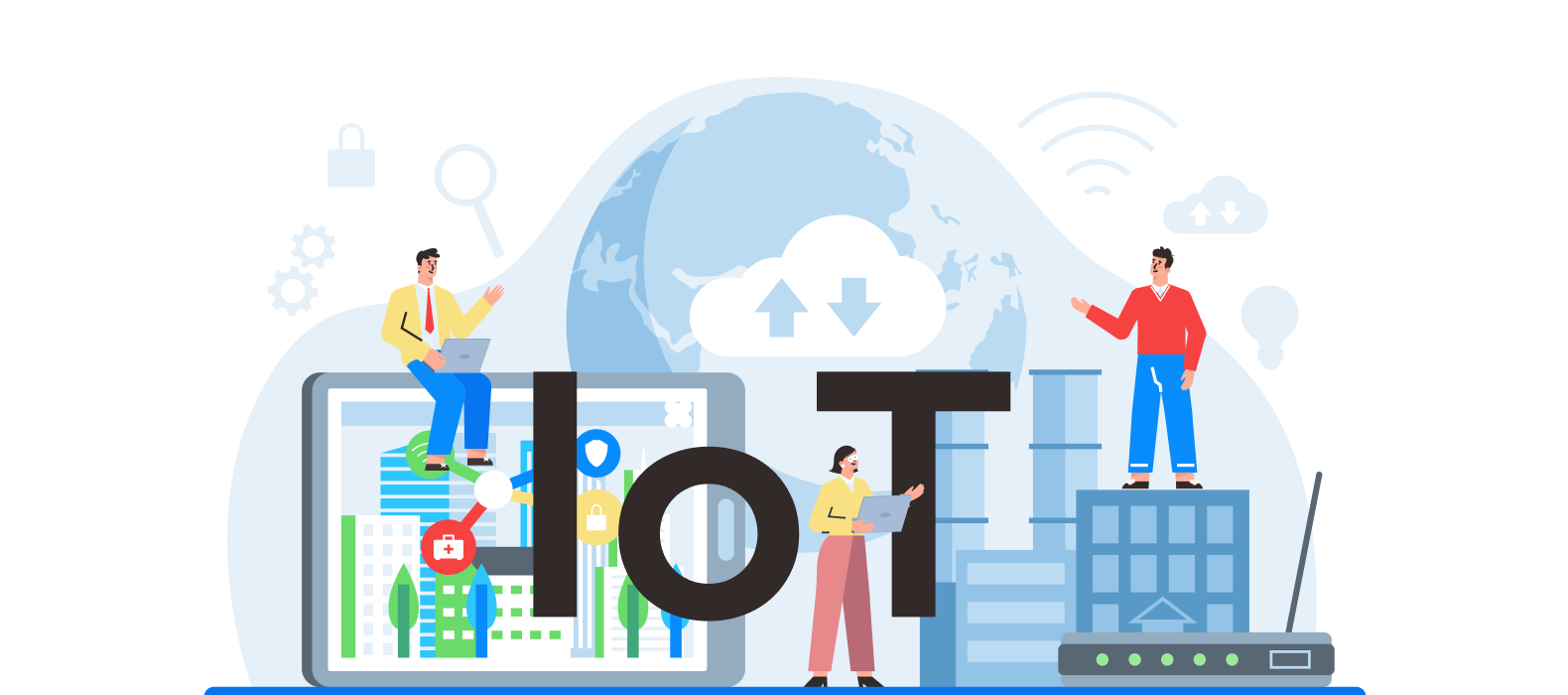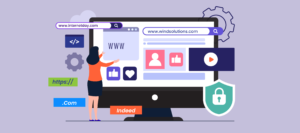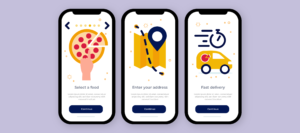You’ve probably heard the term “Internet of Things” from a colleague, an article, or an advertisement at some point. However, the term is extremely broad and can encompass vast information.
The Internet of Things (IoT) is a vast network. Every day, examples of the Internet of Things pop up everywhere, from smart stethoscopes and dog collars to smart cities and cars.
The number of IoT-connected devices is expected to triple in a decade, reaching over 25 billion by 2030. Total revenue is expected to double during the same period, reaching $1 billion by 2030.
These statistics demonstrate that the Internet of Things, an ecosystem of connected smart devices, will become integral to our daily lives and the business environment. In fact, it already is.
In actuality, many of the items we use daily are already IoT products. Internet of Things solutions improve our lives in nearly every field, from simple fitness trackers to complex agricultural systems. There will be even more surprising examples of where IoT will be used in the future. It makes sense that the development of IoT applications has attracted so much attention and financing.
Here, we will go through the examples of IoT applications. Let’s start without any further ado!
What is an IoT Based Application?
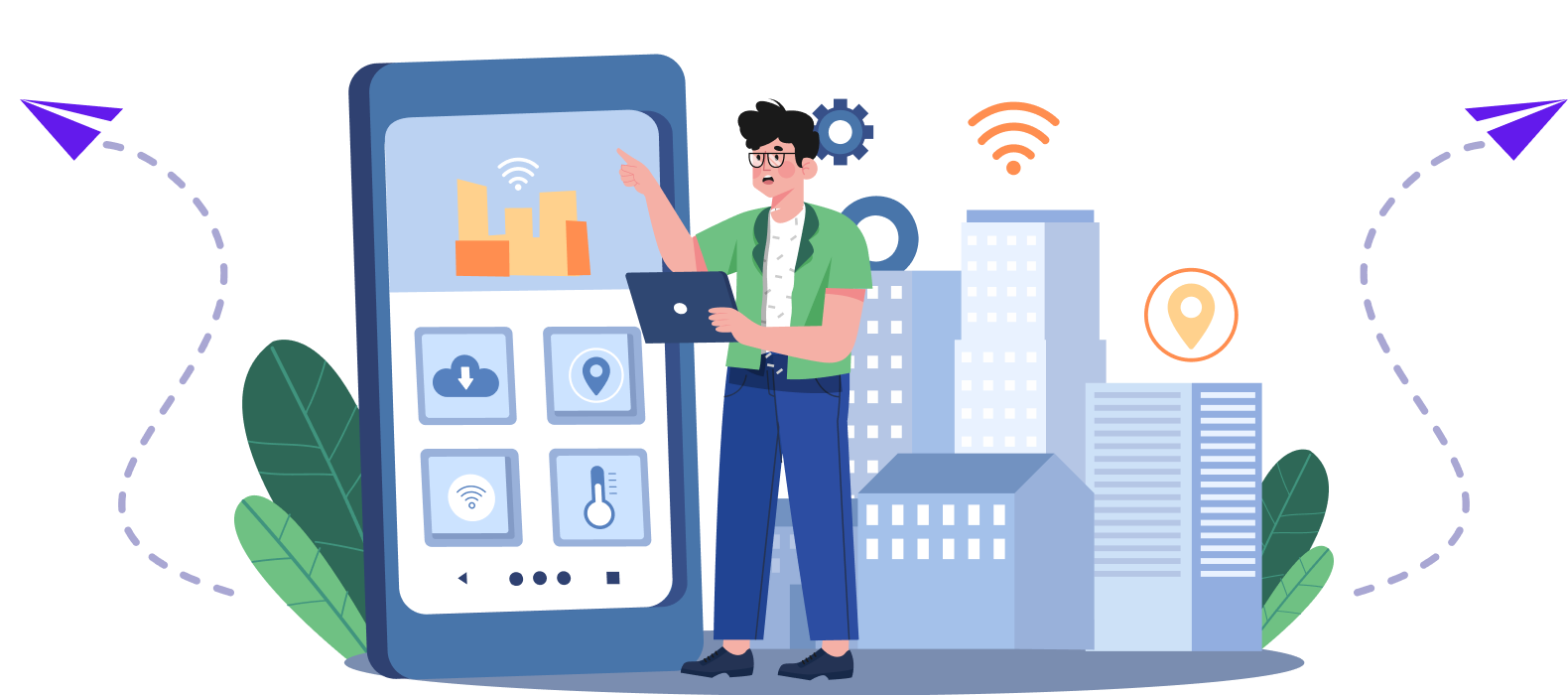
An IoT based applications is any software program or platform that enables data collection, processing, and analysis from various internet-connected devices and sensors. These applications leverage the power of IoT technology to connect physical objects to the internet and allow them to interact with each other seamlessly.
IoT-based applications are in various industries, including healthcare, manufacturing, transportation, and smart homes. For example, I0T in healthcare, the applications can monitor patient vitals remotely. In manufacturing, they can be used to optimize supply chain management and improve production efficiency.
These applications typically use sensors, gateways, and cloud-based platforms to collect and analyze data from connected devices and then use this data to drive insights and actions. They can be programmed to trigger alerts, automate processes, and provide real-time insights into various aspects of operations, allowing organizations to make informed decisions and improve overall efficiency.
Best IoT Applications Examples
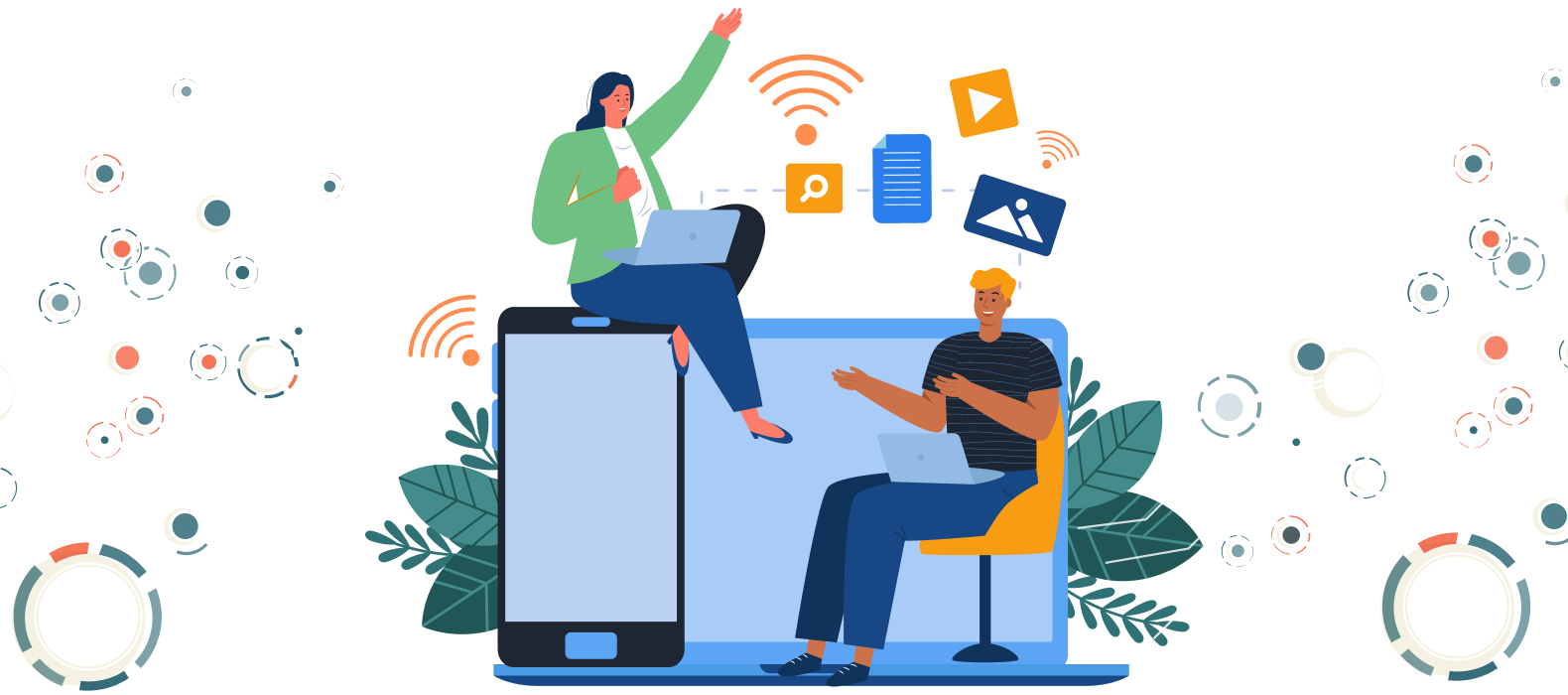
There is a wide variety of IoT (Internet of Things) applications across industries and sectors. Here are some examples:
1. Printavo:
Printavo is a web-based business management application for screen printing, embroidery, and promotional product companies. It provides tools to manage and streamline the workflow, from initial customer contact to final product delivery.
With Printavo, users can easily manage their quotes, invoices, and orders, track payments and manage their customer database. The platform also provides real-time job tracking and scheduling features, allowing users to efficiently manage their production processes.
2. Google Assistant:
Google Assistant is a virtual assistant developed by Google, available on Android, iOS, and smart home devices. It allows users to interact with their devices using natural language and perform various tasks, such as setting reminders, checking the weather, playing music, and controlling smart home devices. The application utilizes artificial intelligence and machine learning algorithms to understand and respond to user queries, providing personalized responses based on the user’s search history, location, and other preferences.
3. Amazon Alexa:
Amazon Alexa is a voice-controlled virtual assistant developed by Amazon that can perform various tasks, such as setting alarms, streaming music, providing weather and news updates, and controlling smart home devices. The Alexa app is the companion app to Alexa-enabled devices, such as the Amazon Echo, Echo Dot, and Echo Show. For example, a user can create a routine called “Good morning” that will turn on the lights, play a specific news podcast, and set the thermostat to a desired temperature.
4. ZenDirect:
ZenDirect is a web-based application designed to streamline the process of managing and tracking shipments for small and medium-sized businesses. The application offers features such as order management, shipping label creation, tracking, and reporting in one convenient platform. One of the key benefits of ZenDirect is its ability to automate shipping processes, saving time and reducing the risk of errors.
5. Samsara:
Samsara is a cloud-based software platform that provides real-time fleet management solutions for businesses. The application is designed to help companies manage their fleets of vehicles, improve safety, increase efficiency, and reduce costs. They offer a range of features, including GPS tracking, route optimization, driver safety monitoring, and asset management. One of the key benefits of Samsara is its ability to provide real-time data on vehicle location, driver behaviour, and other key metrics.
6. Bookvault:
Bookvault is an innovative on-demand printing and shipping application that allows authors and publishers to have their books printed and shipped directly to their customers. With this app, you can easily upload your book files and cover designs, set your pricing and distribution preferences, and let the application handle the rest. Additionally, Bookvault offers a range of distribution options, including direct-to-customer shipping and options to distribute to bookstores and online retailers.
7. Addigy:
Addigy is a cloud-based IT management platform designed for managing Apple devices, such as Macs, iPhones, and iPads, in a business or educational environment. The platform provides comprehensive tools and features to remotely manage and monitor devices, automate workflows, deploy software and updates, and secure data. In addition, Addigy integrates with other third-party tools and services, such as Microsoft Office 365 and G Suite, to streamline workflows and increase productivity.
8. Pareto Security:
Pareto Security means achieving optimal security by focusing resources on the most critical and impactful security risks. The term is derived from the Pareto principle, which states that roughly 80% of effects come from 20% of causes. A small percentage of security risks can cause the most damage in the security context.
Organizations must identify their most critical security risks and prioritize their resources to implement Pareto Security.
9. Fingbox:
Fingbox is a network security device that provides comprehensive network monitoring and security features. It connects to your home network and provides real-time visibility of all devices, allowing you to monitor their activity and detect potential security threats.
With Fingbox, you can identify devices that consume too much bandwidth, block unwanted users or devices from your network, and monitor your internet speed and uptime.
10. Flic:
Flic is a mobile application that allows users to create shortcuts for various tasks using customizable buttons. The app is available for both Android and iOS devices.
With Flic, users can assign specific actions to the physical buttons on their phone or to Flic’s Bluetooth-enabled buttons. For example, users can program a button to call a specific contact, turn on their smart lights, or play a particular song. Flic supports various integrations with other apps and services, including Spotify, Philips Hue, and IFTTT.
11. Thanks.io:
Thanks.io is a web-based application allowing users to send personalized handwritten cards to customers, clients, and other contacts. The platform automates sending physical cards, making it easy for businesses and individuals to show appreciation and build stronger relationships with their audience. They can also choose from a wide selection of pre-made card templates or create their design from scratch.
12. Lob:
Lob is a powerful and user-friendly web API that allows developers to easily print and mail various physical items, such as letters, postcards, photos, and posters, without manual handling. With Lob, businesses and individuals can streamline their mailing processes, eliminate the need for in-house printing and mailing, and save valuable time and money. They offer various customization options, allowing users to personalize their mailings with unique designs, logos, and text.
13. The Receptionist:
The Receptionist application is a visitor management system that provides businesses with an efficient and secure way to manage visitors, employees, and deliveries. It offers features such as visitor registration, badge printing, visitor tracking, and notification alerts, which help businesses to streamline their reception process and improve security. The application can be accessed through a web browser or mobile app, making it easy to use and accessible from anywhere.
14. YoPrint:
YoPrint is a mobile application that allows users to print directly from their mobile devices. The app is available for Android and iOS platforms and can print many documents, including photos, PDFs, and Microsoft Office documents.
One of the unique features of YoPrint is its ability to print documents from various cloud storage services, including Dropbox, Google Drive, and OneDrive. This means that users can easily access and print their documents anywhere without a computer.
15. Click2Mail:
Click2Mail is a web-based application that allows users to create, print, and mail documents online. It provides various tools and features to simplify printing and mailing documents, including a document editor, address book, postage calculator, and tracking tools.
With Click2Mail, users can upload documents from their computer or create them directly in the application. The document editor includes features such as adding text, images, graphics, and templates for common document types such as letters and postcards.
16. Addressable:
An addressable mail application allows users to create and send beautiful, handwritten notes to specific recipients. These notes are personalized and tell a specific story to the intended audience, making them more likely to respond positively to the message. This app can be particularly useful for business professionals who want to make a lasting impression on potential clients or colleagues.
One of the biggest advantages of using an addressable application is that it can help users increase their calls and appointments.
17. Samsara:
Samsara is a cloud-connected sensor data platform that helps businesses optimize their operations through real-time insights and analytics. Samsara’s platform comprises wireless sensors, gateways, and a cloud-based software platform that connects, collects, and analyzes sensor data from various sources.
The platform gives businesses a comprehensive view of their operations, allowing them to make data-driven decisions that improve efficiency, productivity, and safety.
18. Minut Smart Home Sensor:
Minut Smart Home Sensor is a compact and easy-to-use device that helps you monitor and secure your home. It is designed to detect various environmental factors such as temperature, humidity, noise, and motion. The wireless sensor can be easily mounted on a wall or ceiling.
One of the key features of the Minut Smart Home Sensor is its ability to detect unusual events in your home. For example, if the sensor detects a sudden increase in noise or motion, it will alert your smartphone.
19. Neato:
Neato is a popular mobile application that helps users organize tasks and schedules. It is designed to be simple, intuitive, and user-friendly, making it a favourite among busy professionals, students, and individuals looking to improve their productivity.
The app allows users to create to-do lists, set reminders, and track their progress towards completing their goals. It also offers a variety of customization options, including the ability to set priorities, add notes, and categorize tasks based on their urgency or importance.
20. Ubiqod:
Ubiqod is an IoT (Internet of Things) platform that enables users to easily create and manage connected devices and applications. The platform provides tools and services for building IoT solutions, including device management, data analytics, and other services and systems integrations.
One of the key features of Ubiqod is its drag-and-drop interface, which allows users to quickly and easily create custom IoT applications without requiring any programming skills.
21. bttn:
BTTN is a mobile application designed to simplify the process of requesting services or making orders for various goods. With BTTN, users can quickly order food, book a taxi, or make a reservation with a few taps on their mobile devices. The app also allows users to customize their requests by providing additional details or special requests. One of the key features of the BTTN app is its ability to save users’ favourite or frequently used services for quick access.
22. Adafruit IO:
Adafruit IO is a cloud-based internet of things (IoT) platform designed to help users collect, store, and visualize data from connected devices. It provides an easy way to build custom IoT applications without requiring backend or server-side programming.
The platform allows users to connect their devices to the internet and send data to Adafruit IO using various communication protocols such as MQTT, REST, or WebSockets. Once the data is received, it can be stored and organized using feeds and data channels for incoming information.
23. Nexkey:
Nexkey is a mobile application designed for managing access control to physical spaces, such as offices or apartment buildings. It allows users to unlock doors using smartphones, eliminating the need for traditional physical keys or keycards.
The Nexkey app works with a cloud-based platform that allows building owners or administrators to grant and revoke access permissions to users remotely.
24. Luxafor:
Luxafor is an application designed to help individuals manage their workflow and increase productivity. It is a tool that uses coloured LED lights to indicate the status of a task or project, making it easy to see what needs to be done at a glance. Users can also set up custom colour codes to match their specific workflow.
25. Localytics:
Localytics is a mobile app analytics and marketing platform that helps developers and marketers understand user behaviour and engage with their app users. It provides insights into how users interact with the app, what features they use, and what actions they take. The app also provides powerful segmentation capabilities, allowing developers to target specific groups of users with personalized messages and push notifications.
26. ezeep Blue printing:
ezeep Blue is a cloud-based printing solution that lets users print from any device to any printer, regardless of location. It offers a simple, easy-to-use printing interface accessible from any web browser or mobile device. The solution supports a wide range of printers, including both laser and inkjet models and multifunction printers and plotters.
27. DocuPost Postal Mail:
Ezeep DocuPost Postal Mail is a web-based application that allows users to send physical mail without needing a physical mailbox or postage stamps. The application offers a unique solution to the problem of physical mail delivery in the digital age.
The application is especially useful for businesses and individuals who need to send physical documents, such as contracts or invoices, but do not have a physical mailing address or the time to handle the logistics of physical mail delivery. Ezeep offers tracking and delivery confirmation services for added peace of mind.
28. Lone Worker by Ok Alone:
Lone Worker by Ok Alone is a mobile application designed to help companies and organizations ensure the safety of their employees who work alone or in remote locations. The app allows lone workers to check in and out of their work location, set up regular check-ins or reminders, and trigger an emergency alert if they encounter a hazardous situation. Additionally, The app provides an efficient and cost-effective way to manage lone worker safety, reducing the risks associated with lone working and ensuring compliance with health and safety regulations.
29. myDevices:
myDevices is an IoT (Internet of Things) platform designed to simplify connecting and managing connected devices. The application allows users to quickly and easily connect a wide range of devices, such as sensors, cameras, and smart home devices, to a single dashboard for remote monitoring and control.
One of the key features of myDevices is its user-friendly interface, which makes it easy for technical and non-technical users to set up and manage their IoT devices.
30. Habitica:
Habitica is a habit-building and productivity application that turns your daily tasks and goals into a game-like experience. The app is designed to help you stay motivated, organized, and productive by transforming your habits and tasks into a role-playing game.
It also includes a social feature that allows you to join or create groups with other users who share similar goals and interests. This feature enables you to compete or collaborate with others and share your progress with them.
Conclusion
The Internet of Things (IoT) is all around us. Innovative businesses and consumers are focusing on developing innovative methods for using the power of IoT to disrupt industries and traditional business models. We have chosen 30 real-life Internet of Things examples with concrete customer cases from our daily work providing IoT Connectivity and IoT Cloud services to inspire you.
FAQs
Question 1: What are IoT based applications?
An IoT-based application is a software program that leverages the power of the Internet of Things (IoT) to automate and optimize a specific task or process. IoT-based applications typically use sensors, smart devices, and other connected technologies to gather and transmit real-time data, enabling users to make more informed decisions and take more efficient actions.
Question 2: What are some benefits of using IoT-based applications?
Some benefits of IoT-based applications include increased efficiency, reduced costs, improved safety and security, enhanced data accuracy, and greater scalability. IoT-based applications can also help organizations gain deeper insights into their operations and customers, leading to more informed decision-making and a competitive edge.
Question 3: What are some examples of IoT-based applications?
There are many examples of IoT-based applications, including:
- Luxafor
- Addigy
- Samsara
- Bookvault
- Bttn
- ZenDirect
Question 4: What are some key features of IoT-based applications?
Some key features of IoT-based applications include real-time data analytics, machine learning and artificial intelligence capabilities, predictive analytics, automation and control features, and data security and privacy measures. These features enable IoT-based applications to provide powerful insights and solutions that can transform how businesses and individuals operate and interact with the world around them.

